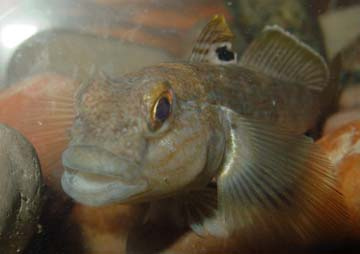Nestled in the northwest corner of Michigan’s Lower Peninsula, the Grand Traverse Bay has had declining native fish populations for decades. And all-too-common perpetrators are largely to blame — aquatic invaders.

Water gun pulse (top) and a water gun at its charged, fired and implosion phases (bottom). Illustration: Ebinger, Farokhkish and Wagner (USGS)
But a new federal and state partnership seeks to bolster the popular bay’s native fish populations. Officials will use traps and seismic guns to clear rusty crayfish and round gobies off of spawning reefs, where they hang out and eat fish eggs.
“We are trying to give the native species a helping hand,” Lindsay Chadderton said in a prepared statement. Chadderton is the Great Lakes aquatic species director for The Nature Conservancy. The conservancy is partnering with the Michigan Department of Natural Resources, Central Michigan University, the U.S. Geological Survey and the Grand Traverse Band of Ottawa and Chippewa Indians on the project, which is funded by EPA’s Great Lakes Restoration Initiative.
Trapping often doesn’t work on the mobile round gobies, hence the seismic guns. While they sound Star-Trekky, the underwater cannons are pretty simple. They use sound frequencies and water jets to blast away invaders. The U.S. Geological Survey is also testing the guns on Asian carp in the Chicago area waterway.
“The use of seismic technology for this purpose has never been attempted,” Jackson Gross said in a prepared statement. Gross is a U.S. Geological Survey scientist.
“We have had success using these technologies as a sound or acoustic barrier, clearing fish from other areas, so the potential to move goby off spawning grounds is an idea worth testing,” Gross said. “Hopefully we will be annoying enough and make those gobies pack up and leave the neighborhood.”
The seismic guns represent a new way of thinking among those looking to stem the challenges of aquatic invaders — controlling instead of trying to eliminate them.
While the egg-munching invaders are hurting native fish populations, they’re not the bay’s only problem. Matt Herbert, an aquatic ecologist for the The Nature Conservancy, said that docks and other development near the spawning reefs also hurt egg survival. A portion of the funding will go towards restoring the reefs to give the fish eggs cover and protection.
The initial phase — clearing invaders and restoring the reefs — will be completed by 2015, officials estimate.
Featured photo: Kristen Stanford (Flickr)
